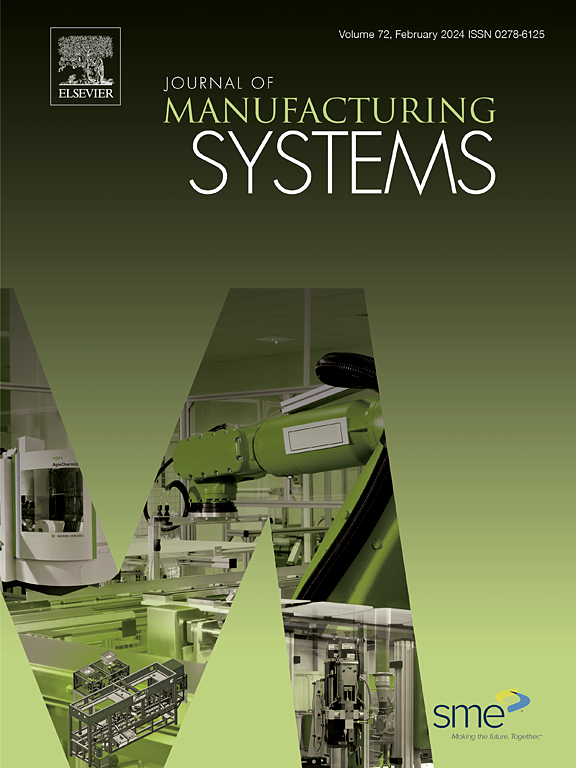Life cycle assessment and energy characterization of friction surfacing deposition of aluminum alloys
IF 14.2
1区 工程技术
Q1 ENGINEERING, INDUSTRIAL
引用次数: 0
Abstract
In this work, an experimental investigation of Friction Surfacing Deposition (FSD) using the 2000-series heat-treatable aluminum alloy was performed including the environmental impact characterization of the process. The effect of main controlling process parameters and their interactions on energy demand during the single layer deposition was evaluated. A full Life Cycle Assessment (LCA) analysis was conducted for layer-by-layer deposition and a comparison of FSD with the Cold Metal Transfer Wire Arc Additive Manufacturing (WAAM) was performed for a specific wall-shaped sample production. It was observed that the FSD process is characterized by lower processing energy than WAAM, but also by a much higher amount of material scrap connected to undeposited parts of consumable tools such as a flash. To assess the possibility of reducing the material waste during FSD, the comparative LCA analysis was expanded to study the impact of the deposited layer length. It was shown that the FSD method can be a more environmentally friendly process when the deposition of at least 450-mm-long layer using a unique tool is required.
铝合金摩擦堆焊寿命周期评价及能量表征
在这项工作中,使用2000系列可热处理铝合金进行摩擦表面沉积(FSD)的实验研究,包括该过程的环境影响表征。评估了主要控制工艺参数及其相互作用对单层沉积能量需求的影响。对逐层沉积进行了全生命周期评估(LCA)分析,并将FSD与冷金属转移丝电弧增材制造(WAAM)进行了比较,用于特定的壁形样品生产。据观察,FSD工艺的特点是加工能量比WAAM低,但也有更多的材料废料连接到消耗性工具(如闪光灯)的未沉积部分。为了评估减少消防处物料浪费的可能性,将比较LCA分析扩展到研究沉积层长度的影响。实验表明,当需要使用一种独特的工具沉积至少450毫米长的层时,FSD方法是一种更环保的工艺。
本文章由计算机程序翻译,如有差异,请以英文原文为准。
求助全文
约1分钟内获得全文
求助全文
来源期刊

Journal of Manufacturing Systems
工程技术-工程:工业
CiteScore
23.30
自引率
13.20%
发文量
216
审稿时长
25 days
期刊介绍:
The Journal of Manufacturing Systems is dedicated to showcasing cutting-edge fundamental and applied research in manufacturing at the systems level. Encompassing products, equipment, people, information, control, and support functions, manufacturing systems play a pivotal role in the economical and competitive development, production, delivery, and total lifecycle of products, meeting market and societal needs.
With a commitment to publishing archival scholarly literature, the journal strives to advance the state of the art in manufacturing systems and foster innovation in crafting efficient, robust, and sustainable manufacturing systems. The focus extends from equipment-level considerations to the broader scope of the extended enterprise. The Journal welcomes research addressing challenges across various scales, including nano, micro, and macro-scale manufacturing, and spanning diverse sectors such as aerospace, automotive, energy, and medical device manufacturing.
 求助内容:
求助内容: 应助结果提醒方式:
应助结果提醒方式:


